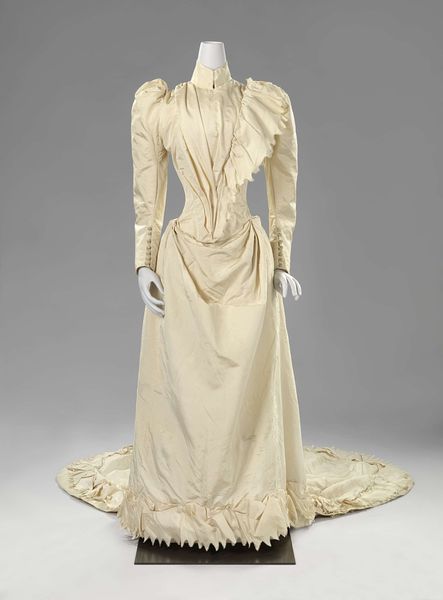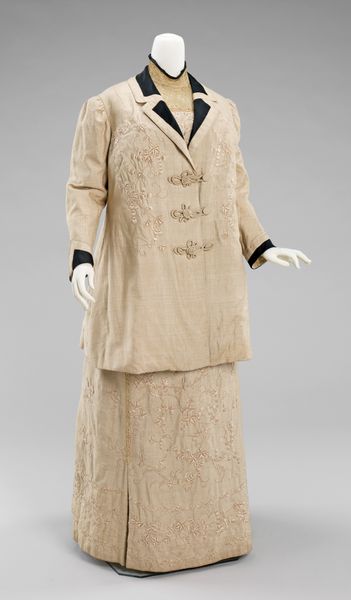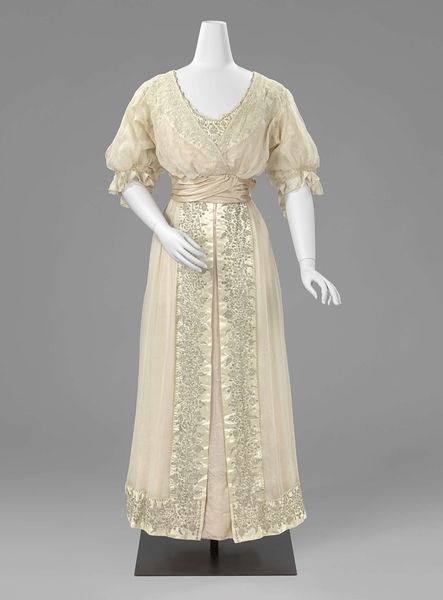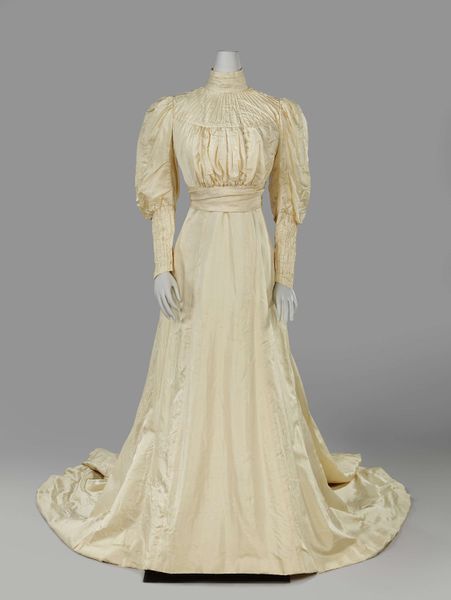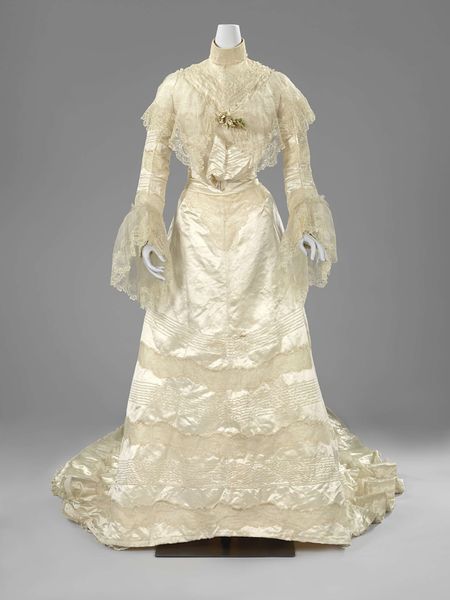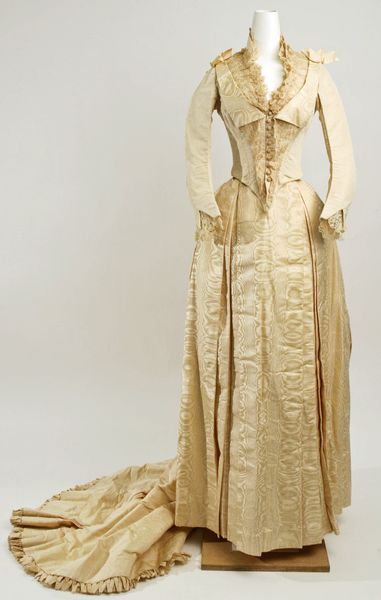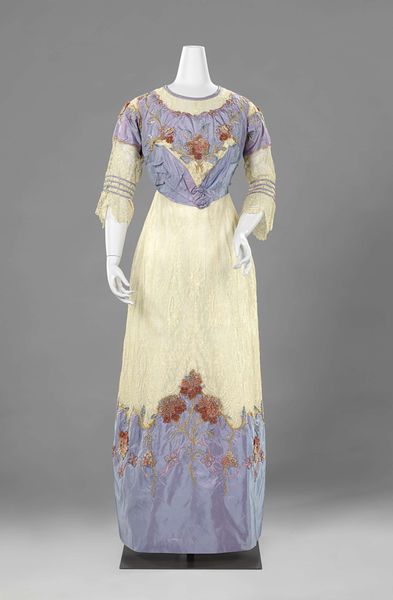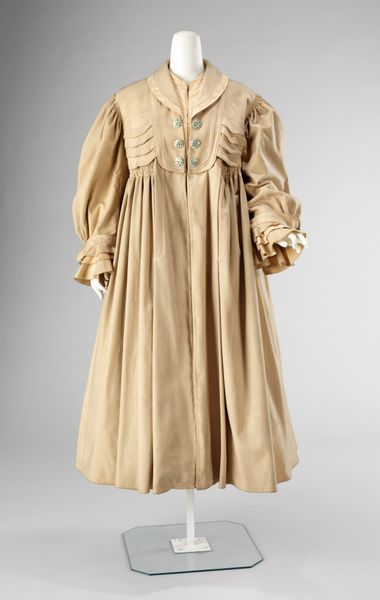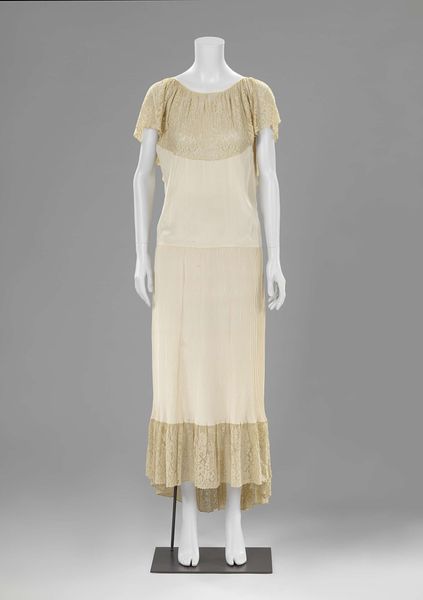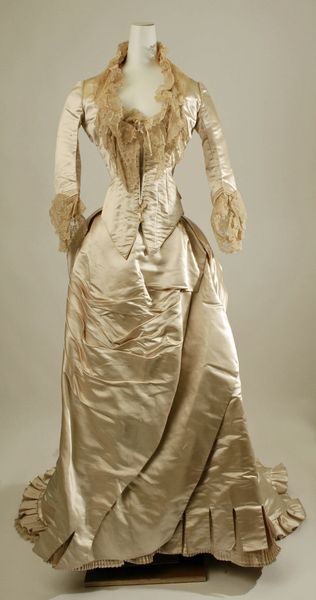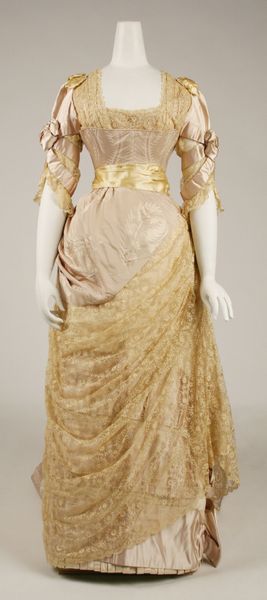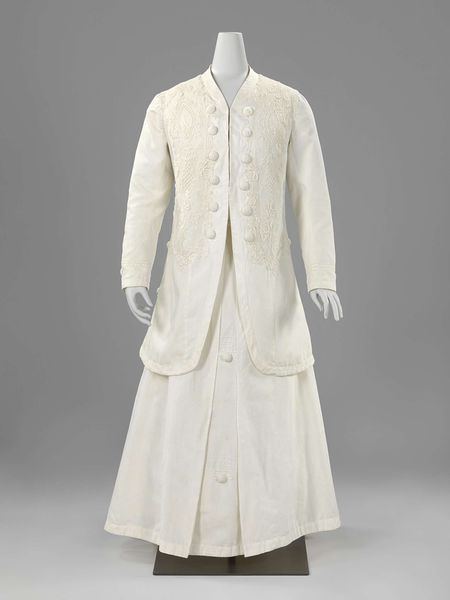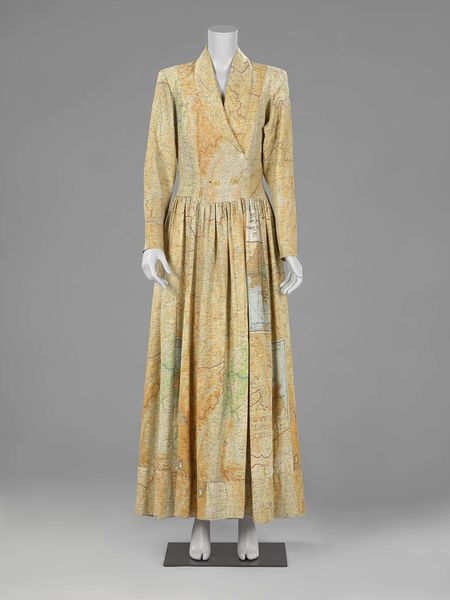
textile
#
fashion design
#
underwear fashion design
#
fashion mockup
#
textile
#
fashion and textile design
#
figuration
#
wearable design
#
clothing theme
#
clothing photo
#
decorative-art
#
fashion sketch
#
clothing design
#
bridal fashion
Dimensions: length 150 cm, length 205 cm
Copyright: Rijks Museum: Open Domain
Editor: Here we have a wedding dress with embroidered and ruffled double sleeves, dating from before 1909. It's so beautiful in its simplicity. I'm curious, what do you see in this piece? Curator: It is exquisite, isn’t it? Beyond its aesthetic appeal, this dress whispers stories of gendered expectations and societal constraints of the era. Can you see how the high neckline and long sleeves confine the body, contrasting with the delicate lace suggesting a paradoxical tension between modesty and desirability? Editor: I do. It feels… contradictory. The lace seems almost rebellious within that silhouette. Curator: Precisely! Consider the context: turn-of-the-century ideals positioned women in a restrictive domestic sphere. A wedding dress, ostensibly a symbol of love and commitment, also signified a woman's transition into a new role dictated by patriarchal norms. Do you see the dress as reinforcing or challenging these norms? Editor: That’s a difficult question, but I think it attempts to negotiate them. The extravagance of the ruffles hints at individuality, maybe even quiet defiance? Curator: It certainly complicates the narrative. Furthermore, the pristine white color carries symbolic weight – purity, innocence, but also erasure, a blank slate onto which society inscribed its expectations. How do you think a contemporary bride might interpret this garment? Editor: I imagine she might question its symbolism. Perhaps reclaim its elegance on her own terms, divorced from those older constraints? Curator: Absolutely! And by engaging with it critically, by understanding its historical baggage, she actively reshapes its meaning. Thank you for pointing that out, that is the most important thing about engaging with history and art. Editor: That's a great way to think about it, bringing new perspectives into conversation with history.
Comments
rijksmuseum about 2 years ago
⋮
This type of dress was introduced in Paris in 1908 as robe tanagréenne, named after the Greek town of Tanagra where female terracotta figurines wearing heavily draped clothing from the 4th century BC had been excavated. It is interesting to note that the bobbin lace used for the collar, neckline, and cuffs was already made in the 18th century. This re-use of older lace came into fashion at the end of the 19th century.
Join the conversation
Join millions of artists and users on Artera today and experience the ultimate creative platform.

